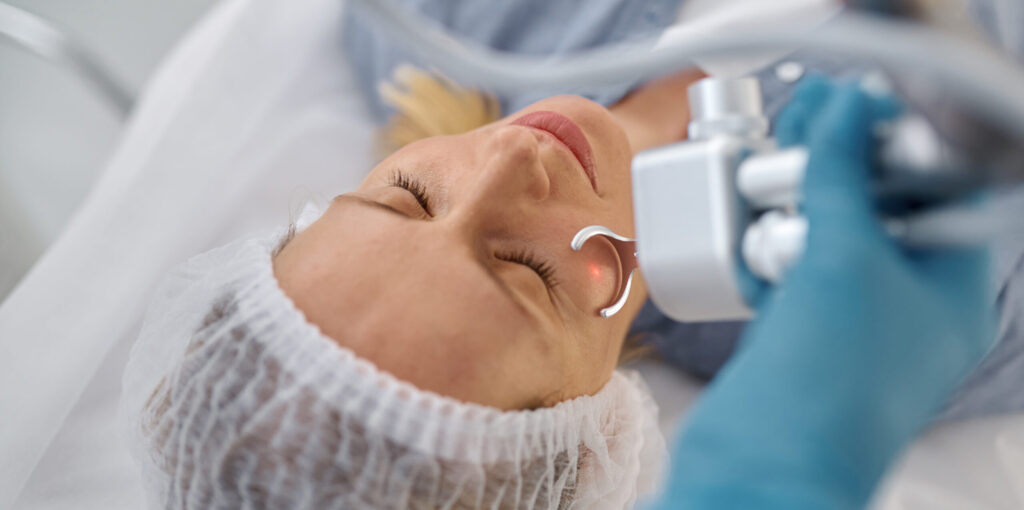Introduction
Cosmetic procedures are often associated with enhancing appearance and addressing aesthetic concerns. However, some of these treatments can also play a crucial role in reducing the risk of skin cancer. This blog explores some of the types of cosmetic skin treatments that have been shown to mitigate sun damage and precancerous changes. We will discuss their effects on sun damage and actinic keratosis, and how they might decrease the risk of developing skin cancer. Additionally, we will cite medical studies that demonstrate how these cosmetic procedures can contribute to cancer prevention.
Types of Cosmetic Skin Treatments
Chemical Peels
Chemical peels involve the application of a chemical solution to the skin, which causes the outer layer to exfoliate and peel off. This process promotes the regeneration of new, healthier skin.
Effects on Sun Damage and Actinic Keratosis
- Sun Damage: Chemical peels can significantly improve the appearance of sun-damaged skin by removing damaged outer layers and promoting collagen production. This can lead to a reduction in fine lines, wrinkles, and uneven pigmentation caused by UV exposure.
- Actinic Keratosis: These are precancerous lesions that result from chronic sun exposure. Chemical peels can effectively remove superficial actinic keratoses, thereby reducing the overall number of these precancerous cells on the skin.
Laser Resurfacing
Laser resurfacing uses concentrated beams of light to remove layers of skin. There are two main types: ablative and non-ablative lasers.
Effects on Sun Damage and Actinic Keratosis
- Ablative Lasers: These lasers remove the outer layers of skin, which can eliminate damaged skin cells and promote the growth of new, healthy skin. Ablative lasers are particularly effective in treating deep wrinkles, scars, and extensive sun damage.
- Non-Ablative Lasers: These lasers stimulate collagen growth and tighten the underlying skin without removing the top layer. They are effective for treating early signs of sun damage and maintaining overall skin health.
Microneedling
Microneedling, also known as collagen induction therapy, involves using fine needles to create tiny punctures or microperforations in the skin. This process stimulates the body’s natural healing response, promoting collagen and elastin production.
Benefits in Skin Cancer Prevention
- Enhanced Skin Renewal: By promoting collagen and elastin production, microneedling enhances the skin’s natural renewal processes. This helps to repair UV-induced damage more effectively.
- Improvement of Skin Texture and Tone: Microneedling can reduce the appearance of sun damage, such as fine lines, wrinkles, and hyperpigmentation, leading to healthier skin.
- Reduction of Actinic Keratosis: Preliminary studies suggest that microneedling can help reduce the number of actinic keratoses, potentially lowering the risk of these lesions progressing to skin cancer.
- Enhanced Absorption of Topical Treatments: Microneedling improves the skin’s absorption of topical treatments, including those with active ingredients aimed at repairing sun damage and preventing skin cancer.
How These Procedures Reduce the Risk of Skin Cancer
Reduction of Precancerous Cells
Microneedling, chemical peels and laser resurfacing have been shown to reduce the number of precancerous cells (actinic keratoses) on the skin. By removing these cells, the risk of progression to squamous cell carcinoma, a common type of skin cancer, is significantly lowered.
Stimulation of Healthy Skin Regeneration
These treatments promote the regeneration of healthy skin, which can improve the skin’s resilience against future sun damage. Healthier skin is better equipped to repair DNA damage caused by UV radiation, thus reducing the likelihood of malignant transformations.
Medical Studies Demonstrating Cancer Risk Reduction
Study on Chemical Peels
- Published in: Journal of the American Academy of Dermatology
- Findings: A study found that patients who underwent medium to deep chemical peels experienced a significant reduction in actinic keratoses. The study concluded that regular chemical peels could be an effective strategy for reducing the risk of skin cancer in patients with a history of extensive sun damage.
Study on Laser Resurfacing
- Published in: Dermatologic Surgery
- Findings: Research demonstrated that ablative laser resurfacing led to a substantial decrease in the number of actinic keratoses. The study showed that this reduction was sustained over time, indicating that laser resurfacing could be a valuable preventive measure against skin cancer.
Study on Microneedling
- Published in: Journal of Clinical and Aesthetic Dermatology
- Findings: A study reported that microneedling, when combined with topical treatments, significantly improved the appearance of sun-damaged skin and reduced the number of actinic keratoses. The enhanced absorption of topical agents through microneedling was highlighted as a key factor in its effectiveness for skin cancer prevention.
Conclusion
Cosmetic procedures like chemical peels, laser resurfacing and microneedling do more than enhance appearance—they can also play a critical role in reducing the risk of skin cancer. By addressing sun damage and removing precancerous cells, these treatments promote healthier skin and lower the likelihood of malignant transformations. Medical studies support the efficacy of these procedures in decreasing the risk of skin cancer, making them a valuable option for individuals looking to improve their skin health and reduce their cancer risk. Regular consultations with a dermatologist can help determine the most appropriate treatments and ensure optimal skin health.
If you’d like to learn more about which procedures can help reduce your risk of skin cancer, please contact Dr. Mamelak today.

